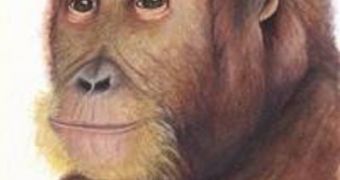Researchers at the Universitat Autonoma de Barcelona Institut Catala de Paleontologia (ICP) believe they may have found a new genus of hominid primate, in the els Hostalets de Pierola, l'Anoia region. The fossil, which displays some very interesting characteristics, is described in the most recent issue of the scientific journal Proceedings of the National Academies of Sciences. The face of the animal exhibits pretty bizarre features, including a flat front, and angles that are similar to those found in the great apes today.
The find may help anthropologists shed some light on the evolution of our own family of species, the Hominidae, PhysOrg reports. It also further confirms suspicions that experts have, related to the fact that it was the area around the Mediterranean Sea, in the southern part of Europe, that allowed for the full development of our species. The finds add to recent ones, which discovered a 33,000-year-old fossil of an early human in a cave in the Carpathian Mountains, over what is now Romania. The fossil is estimated to be about 11.9 million years old, which basically means that it lived in the Middle Miocene time epoch.
The Hominidae family includes humans, gorillas, bonobos, chimpanzees and orangutans. The team that discovered the new remains was coordinated by ICP director Salvador Moya-Sola, and also includes ICP collaborator David M. Alba, ICP predoctoral researcher Sergio Almecija, and ICP curator Jordi Galindo, among others. The team named the animal Anoiapithecus brevirostris, after the region where the beast was discovered, but nicknamed it Lluc (the one who illuminates, in Latin).
“[We] do not completely rule out the possibility that pongines (orangutans and related forms) and hominies (African apes and humans) separately evolved in Eurasia and Africa, respectively, from different kenyapithecine ancestors. The project at els Hostalets de Pierola goes on and, surely, more fossil remains will be found in the future (at ACM or elsewhere in the world), which will provide new key information that will enable to test the latter hypothesis,” the authors write.

 14 DAY TRIAL //
14 DAY TRIAL //